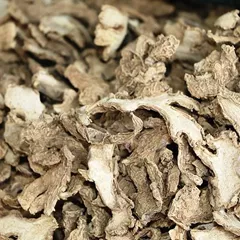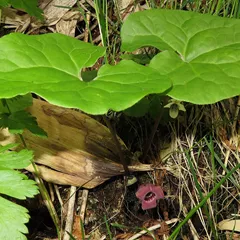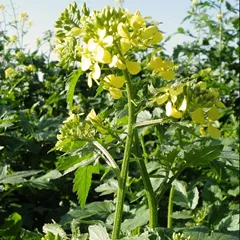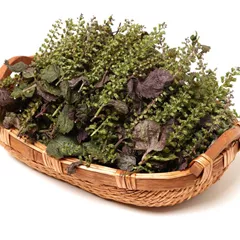Cold-Phlegm
The information provided here is not a replacement for a doctor. You shouldn't use it for the purpose of self-diagnosing or self-medicating but rather so you can have a more informed discussion with a professional TCM practitioner.
At a glance
Preliminary reading: What is a pattern? The concept of Phlegm The concept of Cold
Key attributes
Chinese name: 寒痰 Pinyin name: Hán Tán
Pattern nature: Full
Pattern hierarchy: General pattern with specific forms like Cold-Phlegm in the Lungs
Diagnosis
Common symptoms: Nausea Cold limbs Poor appetite White and watery sputum Feeling of oppression of the chest
Pulse type(s): Deep (Chen), Slippery (Hua), Slow (Chi)
Tongue description: Pale and swollen tongue with white wet coating
Treatment
Treatment principle: Resolve Phlegm, clear Coldness, warm the Kidneys
Common formulas: Ling Gan Wu Wei Jiang Xin Tang San Zi Yang Qin Tang
Pathology
A famous saying in Chinese Medicine goes: "Phlegm has its source in the Kidneys, is then moved by the Spleen, and resides in the Lungs."
This couldn't be more obvious in Cold-Phlegm patterns. The "Cold" aspect of it is that it stems from a Fire Deficiency of the Gate of Life (Ming Men), which is the source of warmth for all physiological processes. This Deficiency inhibits the Spleen's ability to transform and transport the Body Fluids, which accumulate and become Phlegm and thin mucus.
The thin mucus is then sent to the Lungs, the natural next step for Body Fluids after they're filtered in the Spleen. Hence there are the symptoms of white and watery sputum as well as chest oppression in this pattern.
Diagnosing Cold-Phlegm
Diagnosing a pattern in Chinese Medicine is no easy feat and should be left to professional practitioners. In particular one has to know how to differentiate between different types of pulses and tongue coatings, shapes and colors as well as learn to read from a long list of seemingly unrelated symptoms.
Pulse type(s): Deep (Chen), slippery (Hua) or slow (Chi)
Tongue description: Pale and swollen tongue with white wet coating
Main symptoms: Nausea Cold limbs Poor appetite White and watery sputum Feeling of oppression of the chest
Diagnosis commentary: Key characteristic symptoms of this pattern are the white watery sputum, feeling of oppression on the chest and cold limbs.
Treating Cold-Phlegm
Treatment principle
Resolve Phlegm, clear Coldness, warm the Kidneys
Herbal formulas used to treat Cold-Phlegm



The top herbs in Ling Gan Wu Wei Jiang Xin Tang are Dried Ginger (Gan Jiang), Wild Ginger (Xi Xin) and Poria-Cocos Mushrooms (Fu Ling)
Ling Gan Wu Wei Jiang Xin Tang
Source date: 220 AD
Number of ingredients: 5 herbs
Key actions: Warms the Lungs. Transforms congested Fluids.
Formula summary
Ling Gan Wu Wei Jiang Xin Tang is a 5-ingredient Chinese Medicine formula. Invented in 220 AD, it belongs to the category of formulas that warm and transform Phlegm-Cold.
Besides Cold-Phlegm, Ling Gan Wu Wei Jiang Xin Tang is also used to treat Cold-Phlegm in the Lungs or Phlegm-Fluids in the Lungs.



The top herbs in San Zi Yang Qin Tang are White Mustard Seeds (Bai Jie Zi), Perilla Seeds (Zi Su Zi) and Radish Seeds (Lai Fu Zi)
San Zi Yang Qin Tang
Source date: 1856 AD
Number of ingredients: 3 herbs
Key actions: Directs the Qi downward. Transforms Phlegm. Reduces harbored food.
Formula summary
San Zi Yang Qin Tang is a 3-ingredient Chinese Medicine formula. Invented in 1856 AD, it belongs to the category of formulas that warm and transform Phlegm-Cold.
Besides Cold-Phlegm, San Zi Yang Qin Tang is also used to treat Cold-Phlegm in the Lungs or Phlegm clogging the Lungs with Qi Stagnation.
